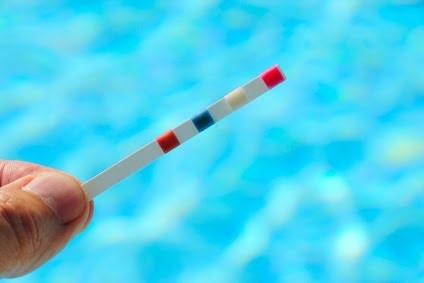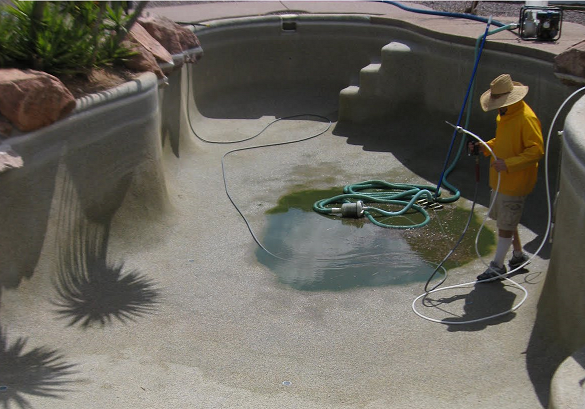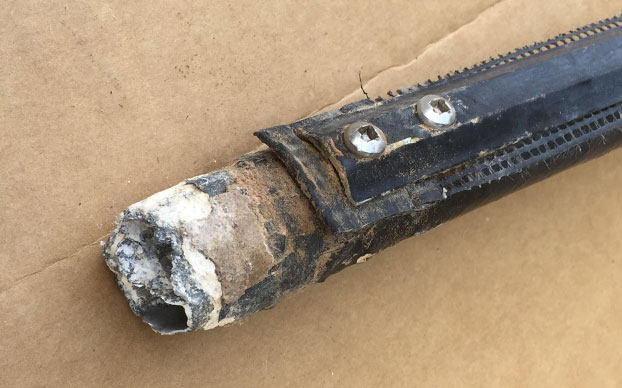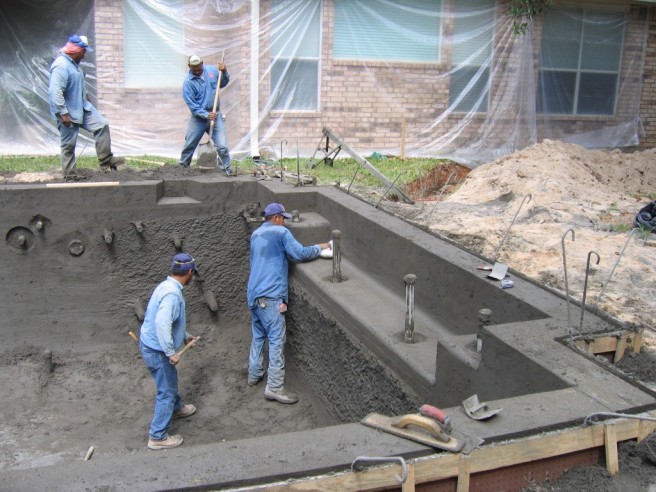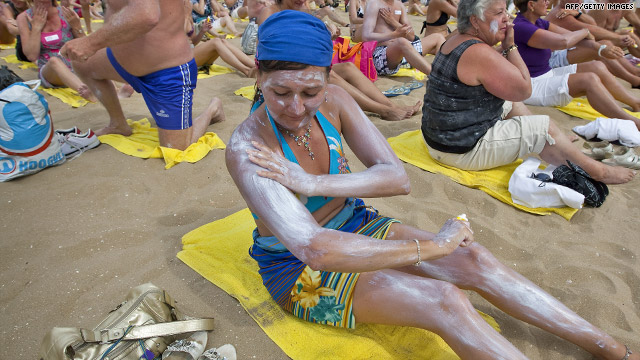
Whether you’re lounging on the beach, jetting down a ski slope or hiking up a mountain, when you’re outside, you’re pummeled by invisible rays that can cause your skin to darken and burn. This ultraviolet (UV) radiation can also damage DNA in your skin cells, causing genetic mutations that can lead to skin cancer. Fortunately, you can protect against many of the damaging effects of these rays with sunscreen.
Sunscreens, which can be sprays, lotions, gels or waxes, are usually made up of a mix of chemicals. Inorganic chemicals in sunscreen can reflect or scatter the light away from the skin, and organic (carbon-based) ones can absorb UV rays so that our skin doesn’t.
Some inorganic chemicals, including minerals such as zinc oxide or titanium dioxide, act as a physical sunblock. They reflect UV rays, similar to how white paint reflects light. The white-colored noses on beach-goers in the 1980s and 1990s were due to these compounds; because manufacturers make the inorganic particles much smaller now, we don’t see the visible white.
Along with inorganic chemicals, sunscreens often contain organic chemicals, with names such as avobenzone or oxybenzone. Instead of physically deflecting UV light, these molecules absorb UV radiation through their chemical bonds. As the bonds absorb UV radiation, the components of the sunscreen slowly break down and release heat.
The lowdown on SPF
The SPF on sunscreen bottles stands for Sun Protection Factor, and refers to how well the sunscreen protects against one type of UV radiation, called UVB (it may be helpful to think B for burning). UVB rays cause sunburn and several types of skin cancer.
Another type of radiation, called UVA radiation, penetrates deeper into the skin and can cause premature wrinkling, age spots and can also heighten the risk for some skin cancers . Sunscreen lotions labeled broad-spectrum block against both UVA and UVB, but currently there is no standard for listing UVA blocking power. Inorganic chemicals that deflect sunlight will deflect both UVA and UVB rays.
Most organizations recommend using sunscreen with an SPF between 15 and 50 (SPF ratings higher than 50 have not been proven to be more effective than SPF 50). A sunscreen with an SPF of 15 protects against about 93 percent of UVB rays, and one with an SPF of 30 protects against 97 percent of rays, according to the Mayo Clinic. No SPF can block 100 percent of UV rays.
Because some UV radiation still gets through the sunscreen and into your skin, the SPF number refers to roughly how long it will take for a person’s skin to turn red. Sunscreen with an SPF of 15 will prevent your skin from getting red for approximately 15 times longer than usual (so if you start to burn in 10 minutes, sunscreen with SPF 15 will prevent burning for about 150 minutes, or 2.5 hours), according to the American Academy of Dermatology.
But because most people don’t use enough sunscreen and because sunscreen tends to rub or wash off, the Skin Cancer Foundation recommends reapplying sunscreen within two hours regardless of its strength, and using at least an ounce (a shot glass-full) for maximum protection.
Some of the chemicals in sunscreen have recently come under fire for possibly being carcinogenic (cancer-causing) or otherwise harmful, according to a report by the Environmental Working Group (EWG), an advocacy group based in Washington D.C. Scientists found that oxybenzone absorbs into the skin and is present in urine long after sunscreen is applied, so some researchers have suggested not using sunscreens containing this chemical on children, according to the EWG report. And in a preliminary study last year, titanium dioxide was shown to cause genetic damage in mice.
In any case, because sunscreen is not an end-all solution, health organizations strongly recommend also using a hat and sunglasses, clothing and shade to protect your skin.








